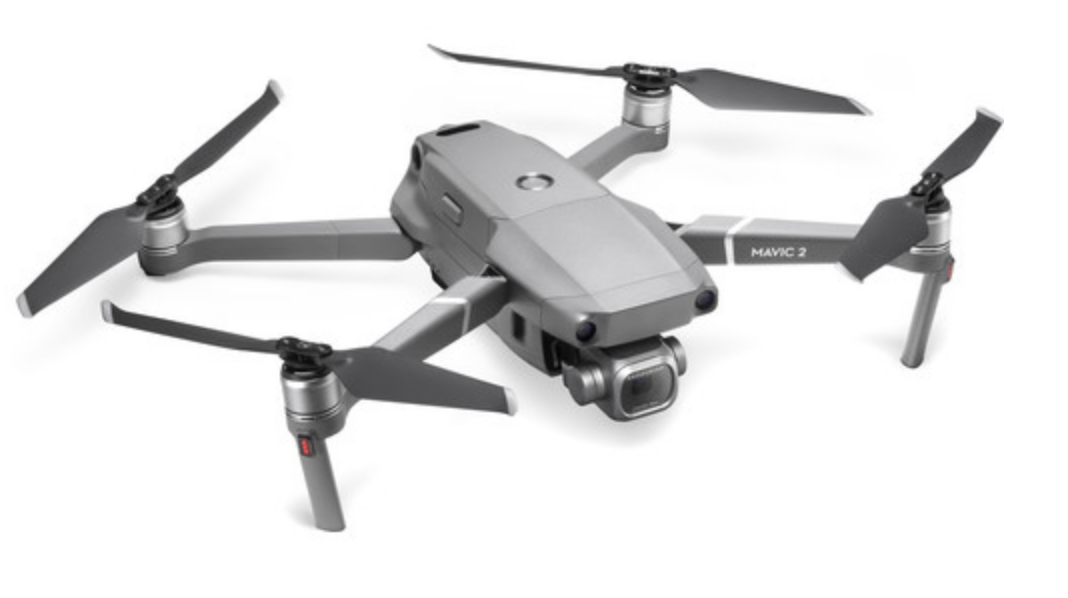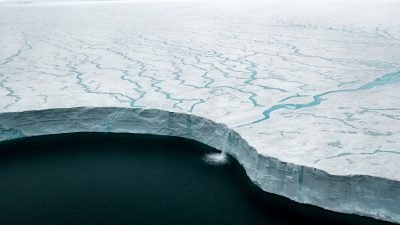Drone Deals/Drones Ranked - Savings on DJI Drones for Black Friday 2019
/DJI Has announced savings of up to $350 off select drones!! This is a huge savings on some of the best drones currently on the market. Below you will find my favorite drones of 2019 at various price points.
#1 Dji Mavic Pro 2
Mavic 2 Pro - Save $350 during the holiday
The BEST drone on the market - The DJI Mavic 2 Pro w/ 1” sensor - Providing awesome photos, great video paired with 360-degree obstacle avoidance, long flight times and easily customizable cinematic movements. I have traveled the world with this drone and I am impressed EVERY time I fly. It is a pro-level drone but is still easily one of the best drones to start with. Occusync connection between drone and controller provides a rock-stable connection with crystal clear video even when the drone is MILES away! I have over 200 flights with the Mavic 2 Pro and it continues to perform flawlessly.
My Original Review | SALE!!! $350 OFF at B&H PHOTO | Save on Amazon
Captured with the Mavic 2 Pro - Awesome for sunsets
The Mavic 2 Zoom is not currently discounted - at $1429 it is not a drone that I typically recommend over the Pro version. Having the zoom is nice but the larger sensor in the Pro model makes it much better for photos. If you plan to ONLY do video you may find the zoom capabilities more useful but not enough that I would recommend it over something like the Autel Evo.
#2 Autel Robotics EVO Quadcopter
4k at 60fps with a smart controller makes this $999 price even more attractive.
I tested the Autel Evo earlier this year and was impressed! This drone is capable of 4k at 60fps. DJI’s Mavic series max out at 4k at 30fps. 60fps is nice to capture more crisp action or playback at 1/2 speed which can often make the footage look just that much more epic. It’s not a big deal but it does give you, as a content creator, additional flexibility. For photographers, the quality is on par with the original Mavic Pro or the current Mavic Zoom. But this drone does have a few advantages beyond the 4k at 60fps.
Screen built into the remote - No smartphone required and setup is faster!
The remote includes a screen! You also get great build quality, and FREE VR hookup all makes this a compelling alternative to DJI’s dominance. The Drone is $999 but I recommend the Autel Robotics EVO Quadcopter with On-The-Go Bundle This kit brings you the EVO quadcopter with all its standard accessories plus a shoulder bag for easy travel, two additional batteries, and one additional pair of propellers.
Buy the Evo from B&H Photo | Watch my short review of the Autel Evo
#3 DJI Mavic Pro (Fly More Combo)
Yes, this older drone released in2016 is on my list in 2019! I still own this drone and it still provides excellent results. The Fly More package provides everything you need - including a total of THREE batteries for just $929! This is only slightly more than the Mavic Air and unlike the Mavic Air this drone uses Occusync technology which provides a crystal clear video feed to your smartphone/controller - letting you see exactly what you are filming with no issues - it also means you easily maintain control of the drone at ridiculously long distances - miles!! The Mavic Air Fly More Combo is about the same price and does provide it all in a smaller package - but its reliance on WIFI connection means shorter range and more interference depending on where you fly. I really like the Mavic Air but at this price, the original Mavic Pro is my pick.
#4 DJI Mavic Mini
The brand new, under 250g, drone from DJI is just $399! I have been flying mine for almost two weeks now and I am very impressed. Despite its tiny size and weight, this drone can perform. The interface is simple and the flight is easy. Image quality is similar to the original Mavic Pro and the Mavic Air and video quality is good but does not offer 4k. 2.7k is the highest resolution. The weight means you do not need to register with the FAA and because it is so lightweight I predict you will throw this in your bag on most trips - it weighs only slightly more than a large smartphone! Did I mention it is easy to fly - No other drone at this price point provides this easy to use interface with GPS for precision flight and one-touch landing.
Buy the Mavic Mini $399 - Fly More Combo $499
#5 - Just for Fun - the DJI Tello Iron Man
Currently on sale for $89. This colorful drone is more than a fun toy- it teaches the beginnings of drone flight and while it doesn’t have GPS it does provide a vision positioning system to ensure stable hovering. The small size and prop guards make this easy to fly inside - It does include a camera capable of 720p and 5mp photos. Paired with an app that provides missions, you ( I mean your kids ;) can feel like a superhero!
Buy from B&H Photo
Which drone is on your holiday wish list?
DJI also has discounts on the Osmo Action, Pocket Osmo and the Ronin S.















 You trade off some features for the smaller size of the Spark. While the Mavic is capable of 24 minutes flight time, closer to 30 with the new Platinum. The Spark offers just 16 minutes in ideal conditions and in flying both of these - I am almost always done with getting the shots I need with the Mavic and have plenty of battery left. With the Spark, it feels fairly urgent to get the shots I need in that shorter timeframe. The Mavic is faster and while you can switch the Spark into sports mode I have struggled to get very cinematic looking shots when it that mode, the Mavic in normal mode is fast enough and remains smoothly controllable. You also sacrifice range - the Mavic can be flown nearly 4 miles away, the Spark just over a mile when using the controllers for each- honestly here in the United States, you need to keep them both in sight at all times so the difference doesn’t bother me much. And it’s important to mention that the spark at $500 does not come with a controller - you control with the DJI app on your phone - that range is much more limited, just 100 meters and while the Mavic is capable of this too it’s really not something I recommend. The lack of tactile feedback and trying to keep your eyes on the drone plus the screen that your fingers are partially obscuring just make it awkward.
You trade off some features for the smaller size of the Spark. While the Mavic is capable of 24 minutes flight time, closer to 30 with the new Platinum. The Spark offers just 16 minutes in ideal conditions and in flying both of these - I am almost always done with getting the shots I need with the Mavic and have plenty of battery left. With the Spark, it feels fairly urgent to get the shots I need in that shorter timeframe. The Mavic is faster and while you can switch the Spark into sports mode I have struggled to get very cinematic looking shots when it that mode, the Mavic in normal mode is fast enough and remains smoothly controllable. You also sacrifice range - the Mavic can be flown nearly 4 miles away, the Spark just over a mile when using the controllers for each- honestly here in the United States, you need to keep them both in sight at all times so the difference doesn’t bother me much. And it’s important to mention that the spark at $500 does not come with a controller - you control with the DJI app on your phone - that range is much more limited, just 100 meters and while the Mavic is capable of this too it’s really not something I recommend. The lack of tactile feedback and trying to keep your eyes on the drone plus the screen that your fingers are partially obscuring just make it awkward. Difference in the external controllers too with the Mavic providing an LCD screen with some basic info (though everything important is also displayed through the app so you don’t really miss out on info but I find it nice to have my altitude and distance in a dedicated spot), you also have a 5 way configurable stick that is replaced by a simple button on the Spark controller and a few additional customizable buttons on the Mavic controller.
Difference in the external controllers too with the Mavic providing an LCD screen with some basic info (though everything important is also displayed through the app so you don’t really miss out on info but I find it nice to have my altitude and distance in a dedicated spot), you also have a 5 way configurable stick that is replaced by a simple button on the Spark controller and a few additional customizable buttons on the Mavic controller. But of course the Spark can be flown without any controller at all via gesture mode and not something available on the Mavic - it feels a bit gimmicky and at times I struggled to get it to do much other than take off and land on my palm but when it works it is fun to use and certainly impresses your friends.
But of course the Spark can be flown without any controller at all via gesture mode and not something available on the Mavic - it feels a bit gimmicky and at times I struggled to get it to do much other than take off and land on my palm but when it works it is fun to use and certainly impresses your friends. Both cameras share the same sensor though the mavic is capable of shooting RAW stills that gives you more editing capabilities, offers a slightly wider fixed aperture f/2.2 vs f/2.6 in the spark and, shooting 4k video with 3 axis gimbal support vs just 1080 and 2 axis gimbal in the Spark at a lower bit rate. I my testing I certainly see an advantage with the Mavic in stills and video quality, especially in lower light. The spark isn’t bad - it just feels a touch behind what the Mavic provides in quality. I haven’t really noticed a difference between the 2 axis and 3 axis gimbals - the spark video looks just as stable smooth.
Both cameras share the same sensor though the mavic is capable of shooting RAW stills that gives you more editing capabilities, offers a slightly wider fixed aperture f/2.2 vs f/2.6 in the spark and, shooting 4k video with 3 axis gimbal support vs just 1080 and 2 axis gimbal in the Spark at a lower bit rate. I my testing I certainly see an advantage with the Mavic in stills and video quality, especially in lower light. The spark isn’t bad - it just feels a touch behind what the Mavic provides in quality. I haven’t really noticed a difference between the 2 axis and 3 axis gimbals - the spark video looks just as stable smooth. You do see a noticeable difference in control options for both photos and video in the app - Not only does the Mavic provide the RAW shooting you have color profiles for video and you can customize the speed of the gimbal for very controlled, cinematic looking shots - not possible on the Spark.
You do see a noticeable difference in control options for both photos and video in the app - Not only does the Mavic provide the RAW shooting you have color profiles for video and you can customize the speed of the gimbal for very controlled, cinematic looking shots - not possible on the Spark. The Spark is cheaper, lighter, smaller and in some ways more fun to fly but does not provide 4k and its image quality/video quality is decent but not quite as good as the Mavic.The Mavic costs more but offers image and video quality that I love using in my travel videos along with the extended flight time and faster speed while remaining cinematic and still being portable enough to bring along just about everywhere.I think the Spark makes a great first drone but the Mavic has those additional advantages that make it worthwhile for the serious content creators that need to travel.I recommend the Fly More Combo for both drones - the extra batteries are useful and having the multi-charger for both drones makes a big difference in how quickly you can get flying again. I recommend buying from B&H Photo - no sales tax outside of NY state.
The Spark is cheaper, lighter, smaller and in some ways more fun to fly but does not provide 4k and its image quality/video quality is decent but not quite as good as the Mavic.The Mavic costs more but offers image and video quality that I love using in my travel videos along with the extended flight time and faster speed while remaining cinematic and still being portable enough to bring along just about everywhere.I think the Spark makes a great first drone but the Mavic has those additional advantages that make it worthwhile for the serious content creators that need to travel.I recommend the Fly More Combo for both drones - the extra batteries are useful and having the multi-charger for both drones makes a big difference in how quickly you can get flying again. I recommend buying from B&H Photo - no sales tax outside of NY state.



 Shop all the DJI Spark colors at B&H Photo
Shop all the DJI Spark colors at B&H Photo No word on the increased flight time being a result of updated batteries or updated electronics in the Platinum Pro.
No word on the increased flight time being a result of updated batteries or updated electronics in the Platinum Pro.
 Cool Feature - using just touch and hand signals the drone can take off from your hand, rotate around you, follow you, snap selfies or group shots and perform a few other prescribed routes while tracking you. Range of course is limited with gestures and even with the app you are limited to less than 100 meters distance.
Cool Feature - using just touch and hand signals the drone can take off from your hand, rotate around you, follow you, snap selfies or group shots and perform a few other prescribed routes while tracking you. Range of course is limited with gestures and even with the app you are limited to less than 100 meters distance. 

 While it can produce professional results the lack of 4k, 16 minute flight time and probable issues in wind make this less ideal for serious aerial photo or video needs. Those that desire a more versatile drone need to consider the Mavic Pro or a higher model.$499 will get you the drone and one battery. You can charge the drone via Micro USB(a first for DJI). Control with hand gestures or the DJI app on your smartphone - range is limited to approximately 100 meters.$699 for the Fly more combo which includes - extra props, prop guards, 1 extra battery (2 total), a remote and a carry case. The remote extends the range to 1.24 miles and while the remote is similar to the DJI Mavic it is much simpler without the LCD Screen.Shipping June 21st - Preorder from
While it can produce professional results the lack of 4k, 16 minute flight time and probable issues in wind make this less ideal for serious aerial photo or video needs. Those that desire a more versatile drone need to consider the Mavic Pro or a higher model.$499 will get you the drone and one battery. You can charge the drone via Micro USB(a first for DJI). Control with hand gestures or the DJI app on your smartphone - range is limited to approximately 100 meters.$699 for the Fly more combo which includes - extra props, prop guards, 1 extra battery (2 total), a remote and a carry case. The remote extends the range to 1.24 miles and while the remote is similar to the DJI Mavic it is much simpler without the LCD Screen.Shipping June 21st - Preorder from 
 [/vc_column][vc_column width="1/4"]
[/vc_column][vc_column width="1/4"] [/vc_column][/vc_row][vc_row][vc_column width="1/4"]Size[/vc_column][vc_column width="1/4"]335mm (Extended) 83mm x 83mm x 198mm (Folded)[/vc_column][vc_column width="1/4"]350mm[/vc_column][vc_column width="1/4"]143×143×55 mm[/vc_column][/vc_row][vc_row][vc_column width="1/4"]Weight[/vc_column][vc_column width="1/4"]1.64 lbs (743g)[/vc_column][vc_column width="1/4"]3.04 lbs (1380g)[/vc_column][vc_column width="1/4"].66lbs (300 g)[/vc_column][/vc_row][vc_row][vc_column width="1/4"]Operating Temp[/vc_column][vc_column width="1/4"]32° to 104° F ( 0° to 40° C )[/vc_column][vc_column width="1/4"] 32° to 104°F (0° to 40°C)[/vc_column][vc_column width="1/4"]32° to 104° F (0° to 40° C)[/vc_column][/vc_row][vc_row][vc_column width="1/4"]Max Ascent /Descent Speed[/vc_column][vc_column width="1/4"]16.4 ft/s | 9.8 ft/s[/vc_column][vc_column width="1/4"]19.7 ft/s | 13.1 ft/s[/vc_column][vc_column width="1/4"] 9.8 ft/s (3 m/s) | 9.8 ft/s (3 m/s)[/vc_column][/vc_row][vc_row][vc_column width="1/4"]Max Flight Time[/vc_column][vc_column width="1/4"]27 Minutes[/vc_column][vc_column width="1/4"]28 Minutes[/vc_column][vc_column width="1/4"]16 Minutes[/vc_column][/vc_row][vc_row][vc_column width="1/4"]Max Flight Distance[/vc_column][vc_column width="1/4"]8 mi (13 km)[/vc_column][vc_column width="1/4"]-[/vc_column][vc_column width="1/4"]-[/vc_column][/vc_row][vc_row][vc_column width="1/4"]Max Tilt Angle[/vc_column][vc_column width="1/4"]-[/vc_column][vc_column width="1/4"]S-mode: 42°A-mode: 35°P-mode: 15°[/vc_column][vc_column width="1/4"]-[/vc_column][/vc_row][vc_row][vc_column width="1/4"]Max Angular Speed[/vc_column][vc_column width="1/4"]-[/vc_column][vc_column width="1/4"]S-mode: 200°/sA-mode: 150°/s[/vc_column][vc_column width="1/4"]-[/vc_column][/vc_row][vc_row][vc_column width="1/4"]Max Wind Speed Resistance[/vc_column][vc_column width="1/4"]-[/vc_column][vc_column width="1/4"]10 m/s[/vc_column][vc_column width="1/4"]-[/vc_column][/vc_row][vc_row][vc_column width="1/4"]Sensor[/vc_column][vc_column width="1/4"]1/2.3” (CMOS), Effective pixels:12.35 MP[/vc_column][vc_column width="1/4"]1/2.3” CMOS, Effective pixels:12.4 MP[/vc_column][vc_column width="1/4"]1/2.3" CMOSEffective pixels: 12 MP[/vc_column][/vc_row][vc_row][vc_column width="1/4"]Lens[/vc_column][vc_column width="1/4"]FOV 78.8° 28 mm (35 mm format equivalent) f/2.2Distortion < 1.5% Focus from 0.5 m to ∞[/vc_column][vc_column width="1/4"]FOV 94° 20 mm (35 mm format equivalent) f/2.8 focus at ∞[/vc_column][vc_column width="1/4"]FOV 81.9° 25 mm (35 mm format equivalent) f/2.6(shooting range: 2 m to ∞)[/vc_column][/vc_row][vc_row][vc_column width="1/4"]Gimbal[/vc_column][vc_column width="1/4"]3-Axis[/vc_column][vc_column width="1/4"]3-Axis[/vc_column][vc_column width="1/4"]2-Axis[/vc_column][/vc_row][vc_row][vc_column width="1/4"]ISO Range[/vc_column][vc_column width="1/4"]100-3200 (video)100-1600 (photo)[/vc_column][vc_column width="1/4"]100-3200 (video)100-1600 (photo)[/vc_column][vc_column width="1/4"]Video: 100-3200Photo: 100-1600[/vc_column][/vc_row][vc_row][vc_column width="1/4"]Shutter Speed[/vc_column][vc_column width="1/4"]8s -1/8000s[/vc_column][vc_column width="1/4"]8 - 1/8000 s[/vc_column][vc_column width="1/4"]2-1/8000 s[/vc_column][/vc_row][vc_row][vc_column width="1/4"]Image Size[/vc_column][vc_column width="1/4"]4000×3000[/vc_column][vc_column width="1/4"]4000×3000[/vc_column][vc_column width="1/4"]3968×2976[/vc_column][/vc_row][vc_row][vc_column width="1/4"]Still Photography Modes[/vc_column][vc_column width="1/4"]Single shotBurst shooting: 3/5/7 framesAuto Exposure Bracketing (AEB): 3/5 bracketed frames at 0.7 EV BiasInterval[/vc_column][vc_column width="1/4"]Single shotBurst shooting: 3/5/7 framesAuto Exposure Bracketing (AEB): 3/5 bracketed frames at 0.7 EV BiasTimelapseHDR[/vc_column][vc_column width="1/4"]Single ShotBurst Shooting: 3 framesAuto Exposure Bracketing (AEB): 3 bracketed frames at 0.7 EV biasInterval: 2/3/5/7/10/15/20/30/60 s[/vc_column][/vc_row][vc_row][vc_column width="1/4"]Video Recording Modes[/vc_column][vc_column width="1/4"]C4K: 4096×2160 24p4K: 3840×2160 24/25/30p2.7K: 2720x1530 24/25/30pFHD: 1920×1080 24/25/30/48/50/60/96pHD: 1280×720 24/25/30/48/50/60/120p[/vc_column][vc_column width="1/4"]UHD: 4096×2160 (4K) 24 / 25p3840×2160 (4K) 24 / 25 / 30p2704×1520 (2.7K) 24 / 25 / 30pFHD: 1920×1080 24 / 25 / 30 / 48 / 50 / 60 / 120pHD: 1280×720 24 / 25 / 30 / 48 / 50 / 60p[/vc_column][vc_column width="1/4"]-[/vc_column][/vc_row][vc_row][vc_column width="1/4"]Max Video Bitrate[/vc_column][vc_column width="1/4"] 60 Mbps[/vc_column][vc_column width="1/4"] 60 Mbps[/vc_column][vc_column width="1/4"]24 Mbps[/vc_column][/vc_row][vc_row][vc_column width="1/4"]Supported File Systems[/vc_column][vc_column width="1/4"]FAT32 ( ≤ 32 GB ); exFAT ( > 32 GB )[/vc_column][vc_column width="1/4"]FAT32 ( ≤ 32 GB ); exFAT ( > 32 GB )[/vc_column][vc_column width="1/4"]FAT32 (≤ 32 GB)[/vc_column][/vc_row][vc_row][vc_column width="1/4"]Photo[/vc_column][vc_column width="1/4"]JPEG, DNG[/vc_column][vc_column width="1/4"]JPEG, DNG[/vc_column][vc_column width="1/4"]JPEG[/vc_column][/vc_row][vc_row][vc_column width="1/4"]Video[/vc_column][vc_column width="1/4"]MP4, MOV (MPEG-4 AVC/H.264)[/vc_column][vc_column width="1/4"] MP4, MOV (MPEG-4 AVC/H.264)[/vc_column][vc_column width="1/4"]MP4 (MPEG-4 AVC/H.264)[/vc_column][/vc_row][vc_row][vc_column width="1/4"]Supported SD Cards[/vc_column][vc_column width="1/4"] Micro SDMax capacity: 64 GB. Class 10 or UHS-1 rating required[/vc_column][vc_column width="1/4"]Micro SDMax capacity: 64 GBClass 10 or UHS-1 rating required[/vc_column][vc_column width="1/4"]Micro SDMax capacity: 64 GBClass 10 or UHS-1 rating required[/vc_column][/vc_row][vc_row][vc_column width="1/4"]Buy it Today![/vc_column][vc_column width="1/4"]
[/vc_column][/vc_row][vc_row][vc_column width="1/4"]Size[/vc_column][vc_column width="1/4"]335mm (Extended) 83mm x 83mm x 198mm (Folded)[/vc_column][vc_column width="1/4"]350mm[/vc_column][vc_column width="1/4"]143×143×55 mm[/vc_column][/vc_row][vc_row][vc_column width="1/4"]Weight[/vc_column][vc_column width="1/4"]1.64 lbs (743g)[/vc_column][vc_column width="1/4"]3.04 lbs (1380g)[/vc_column][vc_column width="1/4"].66lbs (300 g)[/vc_column][/vc_row][vc_row][vc_column width="1/4"]Operating Temp[/vc_column][vc_column width="1/4"]32° to 104° F ( 0° to 40° C )[/vc_column][vc_column width="1/4"] 32° to 104°F (0° to 40°C)[/vc_column][vc_column width="1/4"]32° to 104° F (0° to 40° C)[/vc_column][/vc_row][vc_row][vc_column width="1/4"]Max Ascent /Descent Speed[/vc_column][vc_column width="1/4"]16.4 ft/s | 9.8 ft/s[/vc_column][vc_column width="1/4"]19.7 ft/s | 13.1 ft/s[/vc_column][vc_column width="1/4"] 9.8 ft/s (3 m/s) | 9.8 ft/s (3 m/s)[/vc_column][/vc_row][vc_row][vc_column width="1/4"]Max Flight Time[/vc_column][vc_column width="1/4"]27 Minutes[/vc_column][vc_column width="1/4"]28 Minutes[/vc_column][vc_column width="1/4"]16 Minutes[/vc_column][/vc_row][vc_row][vc_column width="1/4"]Max Flight Distance[/vc_column][vc_column width="1/4"]8 mi (13 km)[/vc_column][vc_column width="1/4"]-[/vc_column][vc_column width="1/4"]-[/vc_column][/vc_row][vc_row][vc_column width="1/4"]Max Tilt Angle[/vc_column][vc_column width="1/4"]-[/vc_column][vc_column width="1/4"]S-mode: 42°A-mode: 35°P-mode: 15°[/vc_column][vc_column width="1/4"]-[/vc_column][/vc_row][vc_row][vc_column width="1/4"]Max Angular Speed[/vc_column][vc_column width="1/4"]-[/vc_column][vc_column width="1/4"]S-mode: 200°/sA-mode: 150°/s[/vc_column][vc_column width="1/4"]-[/vc_column][/vc_row][vc_row][vc_column width="1/4"]Max Wind Speed Resistance[/vc_column][vc_column width="1/4"]-[/vc_column][vc_column width="1/4"]10 m/s[/vc_column][vc_column width="1/4"]-[/vc_column][/vc_row][vc_row][vc_column width="1/4"]Sensor[/vc_column][vc_column width="1/4"]1/2.3” (CMOS), Effective pixels:12.35 MP[/vc_column][vc_column width="1/4"]1/2.3” CMOS, Effective pixels:12.4 MP[/vc_column][vc_column width="1/4"]1/2.3" CMOSEffective pixels: 12 MP[/vc_column][/vc_row][vc_row][vc_column width="1/4"]Lens[/vc_column][vc_column width="1/4"]FOV 78.8° 28 mm (35 mm format equivalent) f/2.2Distortion < 1.5% Focus from 0.5 m to ∞[/vc_column][vc_column width="1/4"]FOV 94° 20 mm (35 mm format equivalent) f/2.8 focus at ∞[/vc_column][vc_column width="1/4"]FOV 81.9° 25 mm (35 mm format equivalent) f/2.6(shooting range: 2 m to ∞)[/vc_column][/vc_row][vc_row][vc_column width="1/4"]Gimbal[/vc_column][vc_column width="1/4"]3-Axis[/vc_column][vc_column width="1/4"]3-Axis[/vc_column][vc_column width="1/4"]2-Axis[/vc_column][/vc_row][vc_row][vc_column width="1/4"]ISO Range[/vc_column][vc_column width="1/4"]100-3200 (video)100-1600 (photo)[/vc_column][vc_column width="1/4"]100-3200 (video)100-1600 (photo)[/vc_column][vc_column width="1/4"]Video: 100-3200Photo: 100-1600[/vc_column][/vc_row][vc_row][vc_column width="1/4"]Shutter Speed[/vc_column][vc_column width="1/4"]8s -1/8000s[/vc_column][vc_column width="1/4"]8 - 1/8000 s[/vc_column][vc_column width="1/4"]2-1/8000 s[/vc_column][/vc_row][vc_row][vc_column width="1/4"]Image Size[/vc_column][vc_column width="1/4"]4000×3000[/vc_column][vc_column width="1/4"]4000×3000[/vc_column][vc_column width="1/4"]3968×2976[/vc_column][/vc_row][vc_row][vc_column width="1/4"]Still Photography Modes[/vc_column][vc_column width="1/4"]Single shotBurst shooting: 3/5/7 framesAuto Exposure Bracketing (AEB): 3/5 bracketed frames at 0.7 EV BiasInterval[/vc_column][vc_column width="1/4"]Single shotBurst shooting: 3/5/7 framesAuto Exposure Bracketing (AEB): 3/5 bracketed frames at 0.7 EV BiasTimelapseHDR[/vc_column][vc_column width="1/4"]Single ShotBurst Shooting: 3 framesAuto Exposure Bracketing (AEB): 3 bracketed frames at 0.7 EV biasInterval: 2/3/5/7/10/15/20/30/60 s[/vc_column][/vc_row][vc_row][vc_column width="1/4"]Video Recording Modes[/vc_column][vc_column width="1/4"]C4K: 4096×2160 24p4K: 3840×2160 24/25/30p2.7K: 2720x1530 24/25/30pFHD: 1920×1080 24/25/30/48/50/60/96pHD: 1280×720 24/25/30/48/50/60/120p[/vc_column][vc_column width="1/4"]UHD: 4096×2160 (4K) 24 / 25p3840×2160 (4K) 24 / 25 / 30p2704×1520 (2.7K) 24 / 25 / 30pFHD: 1920×1080 24 / 25 / 30 / 48 / 50 / 60 / 120pHD: 1280×720 24 / 25 / 30 / 48 / 50 / 60p[/vc_column][vc_column width="1/4"]-[/vc_column][/vc_row][vc_row][vc_column width="1/4"]Max Video Bitrate[/vc_column][vc_column width="1/4"] 60 Mbps[/vc_column][vc_column width="1/4"] 60 Mbps[/vc_column][vc_column width="1/4"]24 Mbps[/vc_column][/vc_row][vc_row][vc_column width="1/4"]Supported File Systems[/vc_column][vc_column width="1/4"]FAT32 ( ≤ 32 GB ); exFAT ( > 32 GB )[/vc_column][vc_column width="1/4"]FAT32 ( ≤ 32 GB ); exFAT ( > 32 GB )[/vc_column][vc_column width="1/4"]FAT32 (≤ 32 GB)[/vc_column][/vc_row][vc_row][vc_column width="1/4"]Photo[/vc_column][vc_column width="1/4"]JPEG, DNG[/vc_column][vc_column width="1/4"]JPEG, DNG[/vc_column][vc_column width="1/4"]JPEG[/vc_column][/vc_row][vc_row][vc_column width="1/4"]Video[/vc_column][vc_column width="1/4"]MP4, MOV (MPEG-4 AVC/H.264)[/vc_column][vc_column width="1/4"] MP4, MOV (MPEG-4 AVC/H.264)[/vc_column][vc_column width="1/4"]MP4 (MPEG-4 AVC/H.264)[/vc_column][/vc_row][vc_row][vc_column width="1/4"]Supported SD Cards[/vc_column][vc_column width="1/4"] Micro SDMax capacity: 64 GB. Class 10 or UHS-1 rating required[/vc_column][vc_column width="1/4"]Micro SDMax capacity: 64 GBClass 10 or UHS-1 rating required[/vc_column][vc_column width="1/4"]Micro SDMax capacity: 64 GBClass 10 or UHS-1 rating required[/vc_column][/vc_row][vc_row][vc_column width="1/4"]Buy it Today![/vc_column][vc_column width="1/4"]






 Over the course of Photokina the thing that really stole the show was the
Over the course of Photokina the thing that really stole the show was the  Small enough to throw in a bag and take with you to launch quickly for a shot the Mavic Pro will fit the bill. Just barely bigger than a water bottle you can almost carry it in a pocket vs it's larger predecessors which required a large bag to carry all the pieces to assemble in the field. It can be flown just with a smartphone making it a nice quick setup to take with you on the go.It might be the drone for everyone but don't count it out for having lower specs. The Mavic Pro hosts a 4K 12MP camera that sits on a 3-axis gimbal giving you crystal clear photos and video. They also managed to pack 27 minutes of battery life into one charge giving you plenty of time in the air. Additional batteries are $89 although if you order the Fly More Combo you'll have three total for almost an hour and a half of flight time.Albeit the one thing GoPro won out on here is the ability to steal it's gimbal for use without the drone it's a bit of a gimmick. In terms of price they are about equal, the Mavic pro is slightly cheaper at $50 less sans controller as you can use your phone. In full compared to the Karma drone with it's GoPro Hero 5 the Mavic Pro will cost you $999 vs the Karma at $1099. Not to mention if your looking for portability technically the Mavic is a smaller package making it the better deal all around for your first drone.
Small enough to throw in a bag and take with you to launch quickly for a shot the Mavic Pro will fit the bill. Just barely bigger than a water bottle you can almost carry it in a pocket vs it's larger predecessors which required a large bag to carry all the pieces to assemble in the field. It can be flown just with a smartphone making it a nice quick setup to take with you on the go.It might be the drone for everyone but don't count it out for having lower specs. The Mavic Pro hosts a 4K 12MP camera that sits on a 3-axis gimbal giving you crystal clear photos and video. They also managed to pack 27 minutes of battery life into one charge giving you plenty of time in the air. Additional batteries are $89 although if you order the Fly More Combo you'll have three total for almost an hour and a half of flight time.Albeit the one thing GoPro won out on here is the ability to steal it's gimbal for use without the drone it's a bit of a gimmick. In terms of price they are about equal, the Mavic pro is slightly cheaper at $50 less sans controller as you can use your phone. In full compared to the Karma drone with it's GoPro Hero 5 the Mavic Pro will cost you $999 vs the Karma at $1099. Not to mention if your looking for portability technically the Mavic is a smaller package making it the better deal all around for your first drone. The big point where the DJI Mavic wins out against the Karma is intelligence. It's also a smart drone giving a few nice tricks compared to the competition which may be the selling difference depending on what you'd like to use it to shoot. Easy to use, the Mavic Pro can be flown using a touchscreen, TapFly can direct the drone on a touch waypoint even avoiding obstacles automatically along the way. In Gesture mode you can use the force! Kidding aside using gesture recognition to direct the drone to follow or take a selfie even. While using Active track it can recognize common subjects such as people, bicyclists, cars, boats, and animals follow behind, lead in front, circle above or track alongside the subject, keeping the camera focused on the subject while you concentrate on flight maneuvers.As for additional modes you can flip the Mavic into a Sport Mode like a car. This allows the Mavic Pro to reach speeds of 40mph to follow a fast subject while being stable and responsive at the cost of battery life. Alternatively Tripod Mode will do the opposite capping speed out at 2.2 mph for dead still footage for video or somewhat safe indoor flying. Terrain Follow mode means that you can race up a slope behind a subject while remaining at a constant height between 1 ft (0.3 m) and 33 ft (10 m).You can pre-order the DJI Mavic Pro or the DJI Mavic Pro Fly More Combo at the links below, shipping starts October 15th. The Mavic Pro will sell for $999 with remote controller included or $749 without. The combo pack includes two extra batteries, extra propellers, a charging hub, adapter, car charger, and shoulder bag for $1,299. DJI care refresh, their protection plan, is also available for $99 if your the accident prone type who may accidentally damage your new drone.
The big point where the DJI Mavic wins out against the Karma is intelligence. It's also a smart drone giving a few nice tricks compared to the competition which may be the selling difference depending on what you'd like to use it to shoot. Easy to use, the Mavic Pro can be flown using a touchscreen, TapFly can direct the drone on a touch waypoint even avoiding obstacles automatically along the way. In Gesture mode you can use the force! Kidding aside using gesture recognition to direct the drone to follow or take a selfie even. While using Active track it can recognize common subjects such as people, bicyclists, cars, boats, and animals follow behind, lead in front, circle above or track alongside the subject, keeping the camera focused on the subject while you concentrate on flight maneuvers.As for additional modes you can flip the Mavic into a Sport Mode like a car. This allows the Mavic Pro to reach speeds of 40mph to follow a fast subject while being stable and responsive at the cost of battery life. Alternatively Tripod Mode will do the opposite capping speed out at 2.2 mph for dead still footage for video or somewhat safe indoor flying. Terrain Follow mode means that you can race up a slope behind a subject while remaining at a constant height between 1 ft (0.3 m) and 33 ft (10 m).You can pre-order the DJI Mavic Pro or the DJI Mavic Pro Fly More Combo at the links below, shipping starts October 15th. The Mavic Pro will sell for $999 with remote controller included or $749 without. The combo pack includes two extra batteries, extra propellers, a charging hub, adapter, car charger, and shoulder bag for $1,299. DJI care refresh, their protection plan, is also available for $99 if your the accident prone type who may accidentally damage your new drone.






